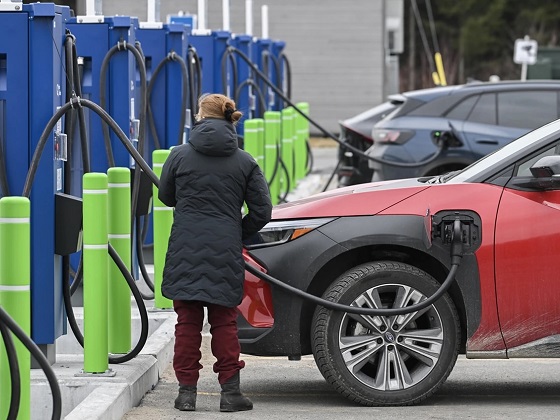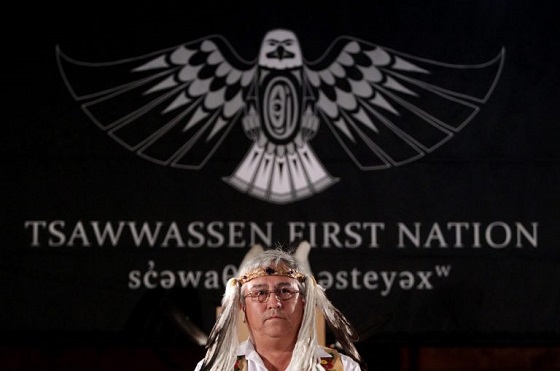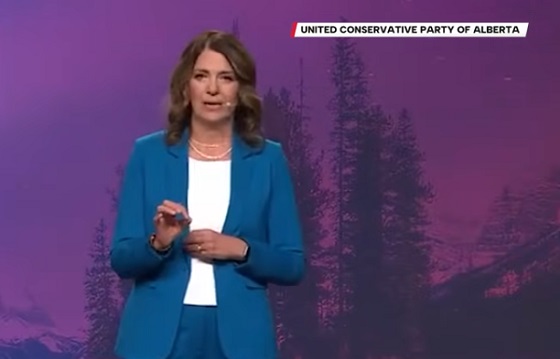Alberta
“Butt out, Creeps”: ALERT issues sextortion warning

From ALERT (Alberta Law Enforcement Response Team)
While the number of sextortion cases remains high for ALERT’s Internet Child Exploitation team, the province-wide unit is launching a multi-media awareness campaign that says “butt out, creeps”.
“Butt out, creeps” is campaign to raise awareness and help youth get smart about sextortion. ALERT worked with DDB Canada to research and develop the campaign, which officially launched on social media channels earlier this month and has already generated over one million impressions.
The ads, featuring dancing eggplant and peach emoji characters, are running on Snapchat, TikTok, YouTube, online gaming platforms and can also be found on the web at buttoutcreeps.ca. The singing eggplant tells kids, “don’t be a wang, don’t be a boob, sending nude pics to strangers makes you look like a newb”. Meanwhile the peach character sings, “if someone you know asks you for a nude, tell someone you trust, then ghost that weird dude”.
“Sextortion cases are completely debilitating for youth and have become all too frequent – and it is happening inside our homes. We are hoping this campaign allows us to connect with youth online, and provide education and supporting resources in a manner that is accessible and noteworthy,” said Supt. Marc Cochlin, ALERT CEO.
The ads are aimed towards connecting with youth between 10 and 17 years of age, who ICE has found to be the primary target of sextortion cases.
Sextortion is where children, specifically boys, are being coerced into sending explicit images online and are then extorted for money, e-transfers, or gift cards. Predators often pose as girls of a similar age and use fake accounts to target youth. Investigating sextortion is challenging as the suspects are believed to be operating overseas, much the same manner as more traditional phone scammers.
The campaign’s primary message is to dissuade youth from sharing nudes online, but to “get smart about sextortion” by following a link to our website with resources and tips.
Last year, ICE received nearly 3,000 case referrals. Record numbers for Alberta as online child sexual exploitation offences have increased by more than 185% in the past five years.
While the ads are designed to connect more with youth, parents also play an important role in prevention. Studies show that 1 in 3 victims of sextortion never told anyone, largely due to embarrassment or shame. Resources for parents are also posted online at buttoutcreeps.ca.
About DDB Canada
DDB Canada is part of DDB Worldwide, one of the world’s largest and most influential advertising and marketing networks. Known for advertising that generates significant results for clients, DDB Canada’s fundamental belief is that creativity is the most powerful force in business. Founded in 1949, DDB is part of the Omnicom Group (NYSE: OMC).
About ALERT
ALERT was established and is funded by the Alberta Government and is a compilation of the province’s most sophisticated law enforcement resources committed to tackling serious and organized crime. Integrated ICE teams investigate offences related to the exploitation of children over the Internet.
Alberta
This new Canada–Alberta pipeline agreement will cost you more than you think


Canada and Alberta’s new net-zero energy deal is being promoted as progress, but it also brings rising costs. In this video, I break down the increase to Alberta’s industrial carbon price, how those costs can raise fuel, heating, and grocery prices, and why taxpayer-funded carbon-capture projects and potential pipeline delays could add even more. Here’s what this agreement could mean for Canadians.
Watch Nataliya Bankert’s latest video.
Alberta
Alberta will defend law-abiding gun owners who defend themselves

Alberta’s government will introduce a motion under the Alberta Sovereignty within a United Canada Act to defend law-abiding firearms owners.
A new motion under the Alberta Sovereignty within a United Canada Act will, if passed by the legislature, instruct all provincial entities, including law-enforcement agencies such as municipal police services and the RCMP, to decline to enforce or implement the federal gun seizure program. The motion also makes clear that Albertans have the right to use reasonable force to defend themselves, their families and their homes from intruders.
This builds on the steps Alberta has already taken to reduce crime, strengthen public safety and assert provincial jurisdiction over firearms. This includes passing the Alberta Firearms Act to establish the Alberta Chief Firearms Office, along with the Alberta Firearms Regulation and the Seizure Agent and Provider Licensing Regulation.
“It’s time for Ottawa to stop targeting the wrong people. Albertans have the right to protect their homes and their families. No one should hesitate to defend themselves when faced with a threat at their own doorway. Law-abiding citizens, hunters, farmers and sport shooters are not the source of violent crime, yet the federal government wants to confiscate their property while illegal guns pour across our borders. Alberta will not stand by while responsible gun owners are treated like criminals. This motion is about using every legal tool we have to protect their rights, uphold public safety and push back on federal overreach into provincial jurisdiction.”
“When someone breaks into your home, the law recognizes that you have enhanced rights to protect yourself and your family. Alberta is making that principle unmistakably clear: lawful, reasonable self-defence will be respected, not criminalized.”
“As an experienced former law enforcement officer, law-abiding gun owners have never been an issue, in my own personal experience, nor has there been any data to support that law-abiding gun owners are the ones that are committing violent gun crimes. The illegal guns that you see being used by criminals are typically being smuggled in from the United States. The federal government should help us strengthen the border, helping us to stop illegal guns from coming into Canada. This would further enhance safety and security for the people of Alberta and Canada as opposed to going after lawful gun owners.”
Under the Alberta Firearms Regulation, municipalities, law enforcement and police commissions must obtain approval from Alberta’s Minister of Justice before accepting funding to participate in the Assault-Style Firearms Compensation Program.
“Misguided federal initiatives such as the handgun transfer ban and the Order in Council firearms prohibitions of 2020, 2024 and 2025 have had a devastating impact on the safe, legitimate activities of the firearms community and the businesses that support it, while having no discernible effect on criminal activity. I am proud to see that the Alberta government is pushing back and supporting lawful firearms owners through these measures.”
“Licensed gun owners and all Albertans can rest assured that their government, under the leadership of the UCP, is laser focused on protecting law abiding citizens while prioritizing real public safety.”
“The Alberta Hunter Education Instructors Association will continue to support our government and the Alberta chief firearms officer in our joint quest to use safety training and education as the key tools to ensure we have safer streets and communities. Safe and responsible use of firearms in Alberta is a key part of our heritage, culture, and our rich and precious heritage.”
Key facts:
- Pursuant to the Attorney General’s recent guidance protocols, Alberta’s prosecutors will decline to prosecute offences under the federal gun seizure program when it is not in the public interest.
- The Attorney General’s recent guidance protocol directs prosecutors to not prosecute home defence offences when it is not in the public interest.
- Total spending on the federal Assault-Style Firearms Compensation Program is expected to exceed $750 million.
- The firearms motion considers the Alberta Bill of Rights, the Constitution Act, 1867 and the Criminal Code.
- Currently 10 per cent of adult Albertans are licenced to use and own firearms. There are 381,900 firearms licences in Alberta.
- Alberta has 638 licensed firearms businesses, 138 shooting ranges and 91 shooting clubs.
-

 National1 day ago
National1 day agoCanada Needs an Alternative to Carney’s One Man Show
-

 Daily Caller1 day ago
Daily Caller1 day agoTech Mogul Gives $6 Billion To 25 Million Kids To Boost Trump Investment Accounts
-

 Alberta12 hours ago
Alberta12 hours agoThis new Canada–Alberta pipeline agreement will cost you more than you think
-

 Business1 day ago
Business1 day agoRecent price declines don’t solve Toronto’s housing affordability crisis
-

 Automotive12 hours ago
Automotive12 hours agoPower Struggle: Governments start quietly backing away from EV mandates
-

 Energy12 hours ago
Energy12 hours agoUnceded is uncertain
-

 C2C Journal2 days ago
C2C Journal2 days agoLearning the Truth about “Children’s Graves” and Residential Schools is More Important than Ever
-

 Business1 day ago
Business1 day agoCanada’s future prosperity runs through the northwest coast




